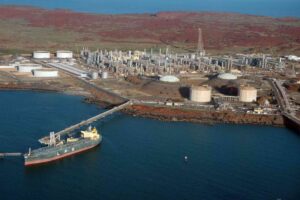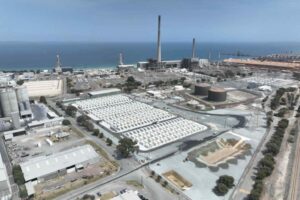You’ve got to hand environment minister Greg Hunt a capital A for Audacity. Or maybe a capital C for Chutzpah.
Round two of the government’s emissions reduction fund – the central plank of its Direct Action plan – has come and gone, another $557 million has been spent making some farmers and carbon traders a lot richer than they used to be, and Hunt is still insisting that it is the greatest success in the history of emissions reductions. Ever.
“In the lead up to Paris, this government has once again demonstrated that we can significantly reduce emissions and tackle climate change without a carbon tax and increased electricity prices,” he press released on Thursday.
It’s easy to claim a triumph with rhetoric, but not so easy to do so with the numbers.
Here is what the government has claimed to have done: It has cherry picked, presumably on the basis of price and authenticity, some 131 projects – mostly in vegetation and savannah burning, but also some in landfill gas and energy efficient lighting – that will deliver 45 million tonnes of abatement at an average of $12.25 each, over 10 years.
Hunt – outrageously – says this is a price that is just one per cent of the carbon price under Labor. Dubiously, he says it will deliver on the government’s (modest) emissions reduction targets – minus 5 per cent from 2000 levels by 2020, and minus 19 per cent on 2000 levels by 2030.
Everyone involved in this charade is keeping mum – or their hands firmly on the wads of cash now in their wallets – about what they really think. They have been dicked around so much by the coming and going of the CPRS and the carbon price, that they feel they deserve something, and wads of cash from a government auction is fair game.
If a government is determined to force money into their pockets for doing something that their clients may well have done anyway (growing trees, not clearing other vegetation, continuing landfill gas operations), then who are they to argue.
But here are a couple of key stats to put it into perspective.
The latest auction will deliver an average of around 5 million tonnes of abatement out to 2020.
But that doesn’t even match the increase in emissions just from the electricity sector since the repeal of the carbon price. According to Pitt&Sherry, these emissions have jumped from an annualized number of 153.1 million tonnes in July 2014 (when the carbon price was junked), to 160 million tonnes now.
That is a result of a boost in brown coal and black coal generation as their operations were made more profitable by the removal of a price on pollution. Coal generation is now at a three year high. Here is a graph from Pitt & Sherry to illustrate that.
The Climate Institute says that – assuming the entire $4.95 billion ERF budget is spent at this average price – the government can buy 377 million tonnes .
This works out as:
- 5% of Australia’s total emissions out to 2030.
- 8% of a 2030 target consistent with Australia doing its bit to achieve the less than 2°C limit.
- 15% of the government’s current inadequate 2030 target.
Now, there is no doubt that reverse auctions are a useful instrument. The ACT government has used them to great success to commission some solar and wind farms, and they are used for similar purposes elsewhere in the world.
But they are not, as Hunt claims, designed to be the centre-piece of a reduction policy. As John Connor, from the Climate Institute noted this week: they are not core policy tools, they are mostly used to support a carbon price of other policy mechanisms.
Hugh Grossman, from Reputex, says that the auction, if you ignore the fact that much of the abatement might not be “additional” (i.e. not happening anyway) have bought some emissions reductions.
But even with this near $5 billion spend, Reputex says Australia is looking to a 15 per cent increase in emissions through to 2030, when the target is supposed to be a 26-28 per cent reduction.
This is what Malcolm Turnbull meant – as the ALP constantly reminds us – when he described the policy as “a con, an environmental fig leaf to cover a determination to do nothing” and a “recipe for fiscal recklessness on a grand scale”.
Yet it is this “fig leaf” for a policy that he will take to Paris, and the crucial climate change conference, claiming that Australia is now a serious and constructive player in the climate space.
What Australia clearly needs is an economy wide price signal for the transition that is upon us, yet Turnbull is apparently hamstrung by the promises he has made to the conservatives that “allowed” him to unseat Tony Abbott, and hopefully save their political careers.
But conservatives don’t have to be like this, and conservative ministers do not need to act so cravenly to their right wing constituents.
 Take this speech by UK Foreign Secretary Philip Hammond, delivered this week in Washington to the American Enterprise Institute, an ultra conservative think tank that has been described as a “hot bed of climate denialism” and in 2007 was accused of offering $10,000 to any scientist who would dispute the IPCC findings.
Take this speech by UK Foreign Secretary Philip Hammond, delivered this week in Washington to the American Enterprise Institute, an ultra conservative think tank that has been described as a “hot bed of climate denialism” and in 2007 was accused of offering $10,000 to any scientist who would dispute the IPCC findings.
Hammond’s message was that combating climate change, and using market policies such as a carbon price, was at the heart of conservative principles.
“It is increasingly clear that the economy of the future will be a low carbon economy,” he said, adding that with the addition of energy storage, “renewables will become the energy of choice – clean, competitive and secure.”
“In the UK we placed a price on carbon. This is completely in line with conservative economic values: a carbon price corrects a market failure: that we have allowed CO2 emissions to be a “free good” to the polluter even though they impose costs on society.”
“A market solution is simple and gives business the certainty that they’re asking for.” And, he noted, having one “has had no noticeable impact” on the country’s overall competitiveness.
“I would suggest that there may now be more risk in being left behind than there is in taking the lead.”
The AEI is similar to Australia’s Institute of Public Affairs, and its members akin to the Far-Right conservative rump in the federal Coalition. Isn’t it a shame that Turnbull and Hunt don’t have the courage to stand up and say something similar in Australia, something that they really do believe and know to be true.







